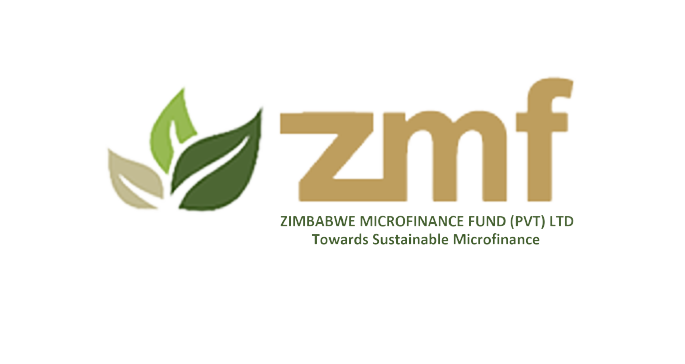The rapidly changing landscape of digital lending
March 12, 2018
Taking stock of the top seven emerging digital lending models
By Priya Punatar
The rapidly changing landscape of digital lending
March 12, 2018
Taking stock of the top seven emerging digital lending models
By Priya Punatar
Last year, Amazon grabbed headlines by giving $1 billion in small-business loans to over 20,000 merchants in the United States, Japan, and the U.K. Their near real-time data on sellers’ businesses and access to customer reviews allow Amazon to evaluate customers and manage the risk of lending to small merchants. WeChat also made waves when it entered the game in 2015. As China’s largest social network, it’s been able to deploy more than US$14.7 billion in funds in just two short years. Like Amazon, WeChat benefits from access to data and the ability to offer convenience and efficiency for the customer — it only takes 0.3 seconds to approve a loan application.
These tech giants have joined a host of other players in a continually evolving digital lending ecosystem. Other prominent digital lenders include Konfío in Mexico and Kenya-based Kopo Kopo. Each platform in this space leverages technology to offer loans that are faster, more cost-efficient, and more straightforward for the customer.
Digital lending is proving to be a potent force for reaching people who haven’t been able to access financial services in the past. Innovative products can overcome the challenges of geography, reduce transaction costs, and increase transparency. But distinct market structures, regulatory environments, and customer needs have led to a wide variety of digital lending models that are each tackling financial inclusion in different ways.
When we evaluated the current state of play, we identified seven primary digital lending models:
• Online lenders. These lenders offer full end-to-end digital lending products online or via mobile applications. In this model, customer acquisition, loan distribution, and customer engagement are entirely digital. This process is specially designed with no need for face-to-face contact or even for customers to phone a call center. Fintech companies like Lidya, Branch, and Tala are online lenders that help entrepreneurs access funding in emerging markets, including Nigeria, Kenya, and the Philippines.
• P2P platforms. P2P platforms are purely digital platforms that match a borrower with an institutional or individual lender and facilitate the digital transaction. The platform typically plays an ongoing central role in the relationship between these parties. In this model, P2P lenders like CreditEase and KwikCash often design the product, score the borrower, and may support repayment and collection processes.
• E-commerce and social platforms. These platforms include the likes of Amazon and WeChat. These are digital platforms where credit is not their core business, but they leverage their digital distribution, strong brand, and rich customer data to offer credit products to their customer base.
• Marketplace platforms. Marketplaces, like Loan Frame in India, are digital platforms that use proprietary algorithms to match a borrower with the right lender. Lenders typically use these types of platforms to acquire new customers, and they pay an origination fee to the platform. Once funds are dispersed, the customer relationship is direct with the lender.
• Supply chain lender. Firms such as Tienda Pago and M-Kopa Solar provide digital short-term working capital loans for microenterprises to purchase inventory from their distributors or for pay-as-you-go financing of an asset purchase. The distribution network enforces repayment through penalties if necessary. For example, suppliers might withhold deliveries of goods or turn off utilities in the case of late payment.
• Mobile money lenders. Firms such as Kopo Kopo partner with mobile network operators to offer mobile money loans to their customer base, leveraging mobile phone data for credit scoring. In this model, physical agent networks where customers can go to complete cash-in/ cash-out transactions supplement the digital interface of the mobile phone.
• Tech-enabled lenders. These are traditional lenders who have embraced technology to digitize part of their otherwise manual lending process. This digitization could include adding digital acquisition channels or digital repayment options. Tech-enabled lenders like Aye Finance in India and Accion Microfinance Bank in Nigeria, supplement their physical distribution networks with technology — providing a ‘tech and touch’ approach.
Adding to the complexity of the digital lending ecosystem is its dynamic nature, which makes strict categorization difficult. Key players continue to test, refine, and evolve their business models and value propositions based on customer needs and market experience.
For example, Creditas, a digital lender in Brazil, started solely as a marketplace platform but has subsequently moved into credit scoring, customer engagement, and financing solutions for customers, to become an online lender. JUMO, an online lender in Kenya, started as an end-to-end mobile money lender but is moving away from funding its own portfolio and becoming a marketplace platform.
Innovation and market expectations will continue to alter and refine the digital lending landscape. However, the similarities shared by today’s successful models are likely to remain prominent: they digitally source customer data, rely on hundreds, and even thousands, of data points to score customers, offer instant and remote approval, create data-driven mechanisms to drive repayment, and engage customers digitally. Advanced digital lenders have leapfrogged over traditional lenders to provide customers with a faster, more transparent, and convenient service. Traditional banks will have to give customers similar benefits if they hope to compete.
To learn more about the ways that digital lending is advancing financial inclusion and how financial service providers can evolve in today’s digital landscape, look out for Accion’s Global Advisory Solutions team’s upcoming publication on Demystifying Digital Lending.
http://blogs.accion.org/features/rapidly-changing-landscape-digital-lending/
Last year, Amazon grabbed headlines by giving $1 billion in small-business loans to over 20,000 merchants in the United States, Japan, and the U.K. Their near real-time data on sellers’ businesses and access to customer reviews allow Amazon to evaluate customers and manage the risk of lending to small merchants. WeChat also made waves when it entered the game in 2015. As China’s largest social network, it’s been able to deploy more than US$14.7 billion in funds in just two short years. Like Amazon, WeChat benefits from access to data and the ability to offer convenience and efficiency for the customer — it only takes 0.3 seconds to approve a loan application.
These tech giants have joined a host of other players in a continually evolving digital lending ecosystem. Other prominent digital lenders include Konfío in Mexico and Kenya-based Kopo Kopo. Each platform in this space leverages technology to offer loans that are faster, more cost-efficient, and more straightforward for the customer.
Digital lending is proving to be a potent force for reaching people who haven’t been able to access financial services in the past. Innovative products can overcome the challenges of geography, reduce transaction costs, and increase transparency. But distinct market structures, regulatory environments, and customer needs have led to a wide variety of digital lending models that are each tackling financial inclusion in different ways.
When we evaluated the current state of play, we identified seven primary digital lending models:
• Online lenders. These lenders offer full end-to-end digital lending products online or via mobile applications. In this model, customer acquisition, loan distribution, and customer engagement are entirely digital. This process is specially designed with no need for face-to-face contact or even for customers to phone a call center. Fintech companies like Lidya, Branch, and Tala are online lenders that help entrepreneurs access funding in emerging markets, including Nigeria, Kenya, and the Philippines.
• P2P platforms. P2P platforms are purely digital platforms that match a borrower with an institutional or individual lender and facilitate the digital transaction. The platform typically plays an ongoing central role in the relationship between these parties. In this model, P2P lenders like CreditEase and KwikCash often design the product, score the borrower, and may support repayment and collection processes.
• E-commerce and social platforms. These platforms include the likes of Amazon and WeChat. These are digital platforms where credit is not their core business, but they leverage their digital distribution, strong brand, and rich customer data to offer credit products to their customer base.
• Marketplace platforms. Marketplaces, like Loan Frame in India, are digital platforms that use proprietary algorithms to match a borrower with the right lender. Lenders typically use these types of platforms to acquire new customers, and they pay an origination fee to the platform. Once funds are dispersed, the customer relationship is direct with the lender.
• Supply chain lender. Firms such as Tienda Pago and M-Kopa Solar provide digital short-term working capital loans for microenterprises to purchase inventory from their distributors or for pay-as-you-go financing of an asset purchase. The distribution network enforces repayment through penalties if necessary. For example, suppliers might withhold deliveries of goods or turn off utilities in the case of late payment.
• Mobile money lenders. Firms such as Kopo Kopo partner with mobile network operators to offer mobile money loans to their customer base, leveraging mobile phone data for credit scoring. In this model, physical agent networks where customers can go to complete cash-in/ cash-out transactions supplement the digital interface of the mobile phone.
• Tech-enabled lenders. These are traditional lenders who have embraced technology to digitize part of their otherwise manual lending process. This digitization could include adding digital acquisition channels or digital repayment options. Tech-enabled lenders like Aye Finance in India and Accion Microfinance Bank in Nigeria, supplement their physical distribution networks with technology — providing a ‘tech and touch’ approach.
Adding to the complexity of the digital lending ecosystem is its dynamic nature, which makes strict categorization difficult. Key players continue to test, refine, and evolve their business models and value propositions based on customer needs and market experience.
For example, Creditas, a digital lender in Brazil, started solely as a marketplace platform but has subsequently moved into credit scoring, customer engagement, and financing solutions for customers, to become an online lender. JUMO, an online lender in Kenya, started as an end-to-end mobile money lender but is moving away from funding its own portfolio and becoming a marketplace platform.
Innovation and market expectations will continue to alter and refine the digital lending landscape. However, the similarities shared by today’s successful models are likely to remain prominent: they digitally source customer data, rely on hundreds, and even thousands, of data points to score customers, offer instant and remote approval, create data-driven mechanisms to drive repayment, and engage customers digitally. Advanced digital lenders have leapfrogged over traditional lenders to provide customers with a faster, more transparent, and convenient service. Traditional banks will have to give customers similar benefits if they hope to compete.
To learn more about the ways that digital lending is advancing financial inclusion and how financial service providers can evolve in today’s digital landscape, look out for Accion’s Global Advisory Solutions team’s upcoming publication on Demystifying Digital Lending.
http://blogs.accion.org/features/rapidly-changing-landscape-digital-lending/






